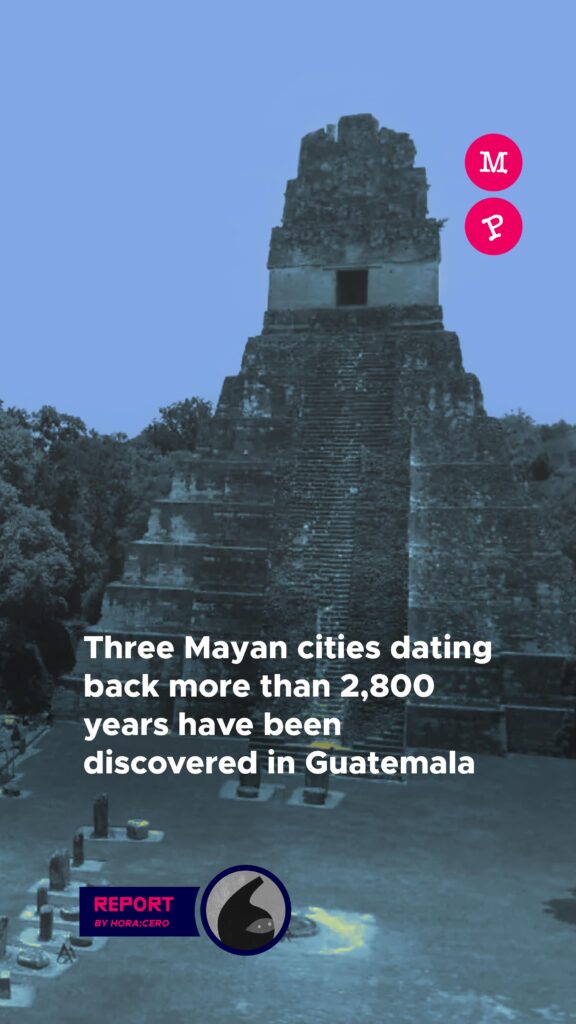
At the end of May 2025, a team of archaeologists announced the discovery of remains of three Mayan cities dating back more than 2,800 years in Petén, northern Guatemala. This discovery is part of the Uaxactún Regional Archaeological Project, an initiative bringing together national and international specialists with the support of Comenius University in Bratislava, Slovakia.
The three discovered cities form an urban triangle covering an area of approximately 1,200 square kilometers. These cities have been named Penal, Cambrayal, and Los Abuelos. Among them, the site of «Los Abuelos» stands out, covering 12 square kilometers and considered one of the most important preclassical centers, dating from between 2000 BC and 250 AD.
Research conducted at «Los Abuelos» indicates that the site was inhabited between 800 and 500 BC. Seven pyramid complexes, astronomical observatories, and twelve stone monuments have been found there. One of the most fascinating discoveries were two anthropomorphic sculptures depicting an ancestral couple, which archaeologists have dubbed «Los Abuelos.» These figures, which date to between 500 and 300 BC, are believed to have been used in worship rituals.
Meanwhile, in the city of Penal, archaeologists discovered a 33-meter-high pyramid that preserves four murals from the Preclassic period. This pyramid offers new insights into the art and religious practices of the early Mayan civilization. Meanwhile, in Cambrayal, an advanced canal system was reported, demonstrating remarkable hydraulic engineering for the period, highlighting the sophistication of Mayan cities in their earliest stages.
This discovery follows the discovery made in April 2025, when an altar of Teotihuacan origin was found in Tikal, also located in Petén, highlighting the interaction and influence between different Mesoamerican civilizations.
Despite these advances, archaeologists emphasize that much work remains to be done in the investigation of the Mayan civilization, one of the longest-standing and most fascinating in Mesoamerica. The discovery of these cities is just one chapter in the ongoing exploration of the ancient Maya and their contribution to humanity’s cultural heritage.

| Cookie | Duración | Descripción |
|---|---|---|
| cookielawinfo-checkbox-analytics | 11 months | This cookie is set by GDPR Cookie Consent plugin. The cookie is used to store the user consent for the cookies in the category "Analytics". |
| cookielawinfo-checkbox-functional | 11 months | The cookie is set by GDPR cookie consent to record the user consent for the cookies in the category "Functional". |
| cookielawinfo-checkbox-necessary | 11 months | This cookie is set by GDPR Cookie Consent plugin. The cookies is used to store the user consent for the cookies in the category "Necessary". |
| cookielawinfo-checkbox-others | 11 months | This cookie is set by GDPR Cookie Consent plugin. The cookie is used to store the user consent for the cookies in the category "Other. |
| cookielawinfo-checkbox-performance | 11 months | This cookie is set by GDPR Cookie Consent plugin. The cookie is used to store the user consent for the cookies in the category "Performance". |
| viewed_cookie_policy | 11 months | The cookie is set by the GDPR Cookie Consent plugin and is used to store whether or not user has consented to the use of cookies. It does not store any personal data. |